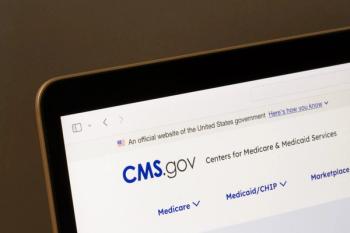
- Drug Topics June 2019
- Volume 163
- Issue 6
Opinion: Data is a Vital Resource in Fighting the Opioid Crisis
Patient data provides a rich resource that can help address the problem of opioid misuse and addiction among their health plan members.
As the opioid crisis blazes a deadly trail across America, one of the most at-risk demographics is the working age population-those between ages 25 and 54. The effects of this crisis are well known: emotional and financial devastation for individuals and their families, overwhelming demands on first responders and social service providers, and mounting losses for businesses that depend on this diminishing workforce. The
Despite this bleak outlook, there is hope. For employers and plan sponsors, patient data provides a rich resource that can help address the problem of opioid misuse and addiction among their health plan members.
As part of the administrative service they provide, health plans may permit plan sponsors to access a broad snapshot of the patient’s pharmacy and medical data. This means plan managers can systematically identify members who are both new and chronic opioid users, monitor behavior, and provide relevant outreach and intervention.
Trending:
For example, a plan manager can set parameters to identify members who have continually used opioids for more than a threshold number of days-often an indicator that they will become long-term users without some type of intervention. A plan manager can also set up alerts so they know when members are filling multiple opioid prescriptions at different pharmacies-a pattern that can point to drug abuse or misuse.
Pharmacy and medical data are of great use here, too. These data sets reveal a chronology of diagnoses and treatments that help pinpoint the causal factors of a plan member’s opioid use, such as long-time chronic pain versus a recent injury. A persistent user who has been taking opioids for 60 days or more requires a different approach to education or intervention than a person who was newly prescribed opioids.
Case managers can use this information to better understand a patient’s situation from a medical and psychological perspective and develop an effective communication plan. Some patients are well-managed with pharmacy-level utilization review alone, but others require more information and outreach to make progress and improve the patient’s well-being. By taking this hands-on approach with an understanding that long-term behavior is not changed instantly, managed care providers can develop personalized treatments to drive success.
Read More:
Such treatment plans often involve working one-on-one with each patient to connect them to the proper care professionals such as social workers and physical therapists, who can help them address the underlying causes of opioid misuse and guide them to other pain management therapies like acupuncture or medical cannabis.
Health plans have the power to facilitate positive change and arrange for comprehensive care to address all aspects of opioid dependencies.
Managed care plans already have a framework to optimize legitimate opioid use and help safeguard against misuse. The valuable data we have are an essential lever in that process. Let’s pull that lever.
Articles in this issue
over 6 years ago
Why Technology Upkeep is Up to Youover 6 years ago
Five Tech Best Practicesover 6 years ago
New Drug Review: Zulresso (Brexanolone)over 6 years ago
Opinion: The Future of Pharmacyover 6 years ago
Discount Drug Cards Are Flourishingover 6 years ago
How to Keep Your Professional Development Currentover 6 years ago
10 Ways to Boost Customer Loyaltyover 6 years ago
Opinion: PharmD Quality vs Quantityover 6 years ago
On the Road to Provider Statusover 6 years ago
Five Tips for Evaluating Clinical StudiesNewsletter
Pharmacy practice is always changing. Stay ahead of the curve with the Drug Topics newsletter and get the latest drug information, industry trends, and patient care tips.





















































































































































